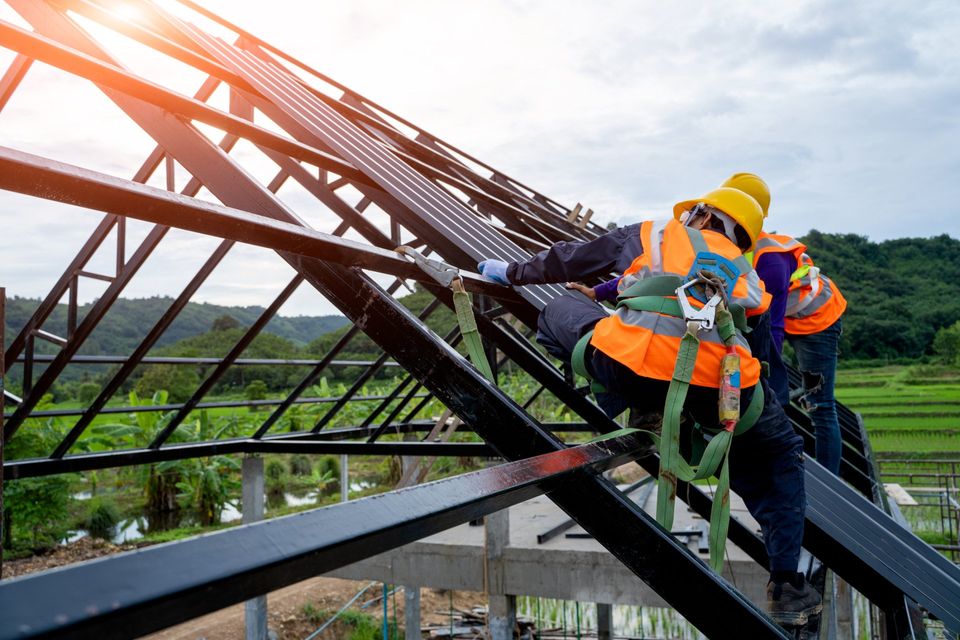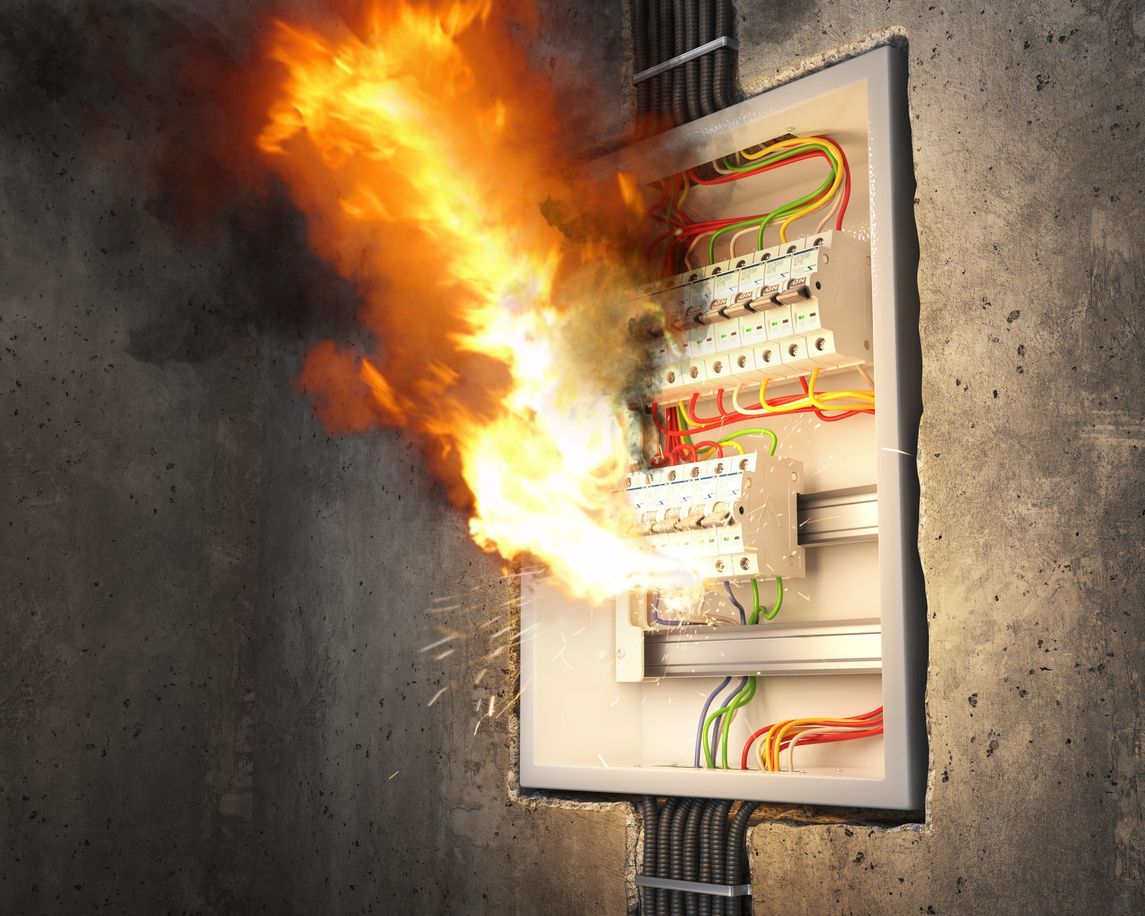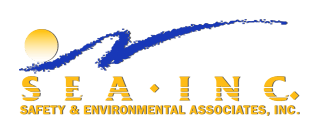Blog Layout
AVOIDING ON-THE-JOB ACCIDENTS WITH HAZARD RECOGNITION & SAFETY TRAINING

Companies that work with hazardous materials are subject to a number of guidelines created by the Occupational Safety and Health Administration (OSHA). Workplace hazard recognition and training is an effective way to ensure OSHA compliance and safety of employees and consumers.
Hazard Recognition and Safety Training Prevents Workplace Accidents Involving Dangerous Materials
According to OSHA regulations, before transporting or working with hazardous materials, employers and their employees must receive proper safety training. The very nature of hazardous materials means that those working with them are more susceptible to workplace accidents and injuries. However, with accurate and detailed instruction, identifying potential hazards before an accident occurs can keep employees and customers safe from harm.
Preemptive measures and proper safety guidelines and policies can be developed with comprehensive hazard recognition and safety training. SEA Inc. offers OSHA compliance and safety training courses for working with, transporting, or disposing of hazardous materials. The next SEA hazard recognition training course is scheduled for November 6 and has a registration fee of $65 per person. The session will explain potential workplace dangers and give participants the opportunity to ask questions to verify their understanding of the class material.
Identifying Workplace Hazards
The SEA certified trainers will make sure that each participant can properly identify workplace hazards. For example, the trainer may ask them to identify situations or areas that could be dangerous and the consequence of that danger. Trainers will also help identify the likelihood of a hazardous situation occurring and factors in the workplace environment that could contribute to it.
Safety Requirements
Every business should create and implement a safety strategy whether or not there are hazardous materials present. Once a plan has been put in place, the information should be distributed to all employees. Any reference material, such as material safety data sheets, should be easily accessible. For information about specific HAZMAT regulations, read “What You May Not Know About Chemicals in Your Facility: Hazardous Materials Management Might Be Required.” After a safety plan has been put into place, select a qualified employee to complete a daily site evaluation to determine potential hazards and initiate prevention methods. To protect your employees, OSHA requires you to have a control program that includes a site work map. The map should display work zones, communication areas and the nearest medical aid location. The businesses safety plan should also discuss the proper steps to follow in the event of an emergency and include any emergency contact numbers that are specific to your industry.
Avoid OSHA Citations
The importance of creating a safety strategy and training your employees to effectively follow procedure cannot be overstated. A citation by OSHA for a safety violation can be detrimental to a business’s reputation and finances. All violations are public record and are easily accessible to customers or investors through the OSHA website. In essence, a violation could cause you to lose the trust, and ultimately the business, of current or future clients. The financial penalties from OSHA citations vary depending on the severity of the violation and frequency. However, six- and seven-figure fines are not uncommon, and there are few business that could stay afloat after such a penalty, which is why it is imperative that a business remains OSHA compliant.
The Benefits of Proper Training
SEA Inc. offers hazardous material training for OSHA and HAZMAT safety standard compliance. Our course covers personal and general safety methods for various industries and will equip participants with proper knowledge of industry safety standards and practices. View our full list of safety training services and register for an upcoming training event today, or contact SEA for more information on any of our safety training courses.

By Derek Jennings
•
February 10, 2025
Each year, as the Occupational Safety and Health Administration (OSHA) releases its list of the top 10 workplace safety violations, a pattern emerges that begs a question: Are these frequent violations a sign that employers continue to struggle with the same safety issues, or does it reflect a disposition among OSHA inspectors to focus on areas where they are trained to focus? The Persistent Issue of Repeated Findings The repetition of certain violations year after year might seem surprising, but it underscores a significant challenge in workplace safety management. The top violations tend to be those that are most visible and easiest to spot during inspections, such as fall protection and hazard communication. This consistency suggests that while awareness is high, practical implementation and adherence to safety practices lag behind. Top 10 Most Cited Health and Safety Standards of 2024 1. . Fall Protection, General Requirements: 6,307 violations For the 14th consecutive year, fall protection tops the list of OSHA's enforcement priorities. This emphasis is not arbitrary; OSHA has designated fall protection as a national emphasis area, making it a primary focus during inspections. It's often one of the easiest violations to spot without extensive investigation skills. The OSHA standard 1926.501 mandates that employers must provide fall protection systems like guardrails, safety nets, or personal fall arrest systems for workers at risk of falls of six feet or more in construction and four feet in general industry. Often, the major factor in these violations is human behavior. Many offenders might think, "No one is watching, and this will only take a moment, so it's no big deal." However, this mindset can lead to non-compliance with critical safety measures, putting worker safety at significant risk.

By Derek Jennings
•
February 7, 2025
The Occupational Safety and Health Administration (OSHA), in collaboration with the Partnership for Electrical Safety and KEMA Laboratories, has recently unveiled new guidance aimed at addressing arc flash hazards in the workplace. This guidance is a crucial update that highlights the need for comprehensive electrical safety programs that specifically include measures to protect against arc flash hazards. Here’s what employers need to understand about the new directives and how they can effectively respond. Understanding Arc Flash and OSHA's Recommendations An arc flash is a type of electrical explosion that results from a low-impedance connection to the ground or another voltage phase in an electrical system. The new guidance provided by OSHA not only offers a clear definition of what constitutes an arc flash but also elaborates on methods to mitigate such hazards during electrical work. The guidance includes detailed documents for employers and useful handouts for employees, emphasizing the common myths and the reality of arc flash dangers. The Role of NFPA 70E OSHA’s guidance strongly correlates with the standards outlined in NFPA 70E, the National Fire Protection Association’s standard for electrical safety in the workplace. Employers who are already compliant with NFPA 70E likely have a written Electrical Safety Program (ESP) that includes protocols for arc flash hazards. This new guidance serves to reinforce the importance of these existing standards while also urging those without comprehensive plans to take immediate action. What if You Don’t Have a Comprehensive ESP? For employers who have yet to develop an ESP that addresses arc flash hazards, OSHA’s guidance is a wake-up call. It is crucial to recognize that general workplace safety standards, although not specifying arc flash, require protection against electrical hazards under regulations like 1910.333. The absence of specific OSHA standards for arc flash does not excuse employers from the responsibility of protecting their employees from such risks. Implementing Effective Arc Flash Protection Measures Incident Energy Analysis: A foundational step in arc flash protection is conducting an incident energy analysis. This process involves studying the facility’s electrical systems to calculate the potential energy released in the event of an arc flash. Understanding this energy potential is essential for determining the arc flash boundary—the distance within which a person could receive second-degree burns or worse if exposed to an arc flash. Developing a Risk Assessment Procedure: Employ ers need to establish a procedure for assessing the risks associated with arc flash. This includes evaluating the tasks being performed, the condition of the electrical equipment, the maintenance history of the equipment, the energy involved, and the potentia l for human error. Deciding on Protective Measures: Once risks are assessed, decisions must be made regarding the best ways to protect employees. This often involves the use of Arc-Rated Pe rsonal Protective Equipment (PPE) and could also include engineering controls such as redesigning parts of the electrical system to minimize arc flash risks. Proactive Versus Reactive: The Choice is Yours The latest guidance from OSHA should be viewed as an unofficial yet critical call to action for employers to either update their existing safety measures or develop new protocols in line with NFPA 70E. Being proactive about electrical safety not only helps in compliance with OSHA’s standards but fundamentally enhances the safety and well-being of employees. Final Thoughts The introduction of OSHA’s arc flash guidance is a significant step toward heightened awareness and improved safety practices surrounding electrical hazards in the workplace. Employers are encouraged to review their current safety protocols, educate their workforce about the dangers of arc flash, and implement comprehensive measures to prevent such incidents. Always keep in mind that workplace safety begins with staying informed and well-prepared. Make it a habit to test before you touch it and prioritize safety like your life depended on it! For more insights into workplace safety and compliance, keep following our blog. Your safety is our priority, and together, we can foster a safer working environment for all. By Derek Jennings President SEA
10201 W. Markham Suite 317
Little Rock, Arkansas 72205
Phone: 888-374-3442
1750 Highway 160 West, Suite 101-147
Fort Mill, SC 29708
Phone: 839-400-2223
Our Hours
- Mon - Sun
- Open 24 Hours
© 2025
SEA Inc. | Powered by Flypaper | All Rights Reserved | Privacy Policy

